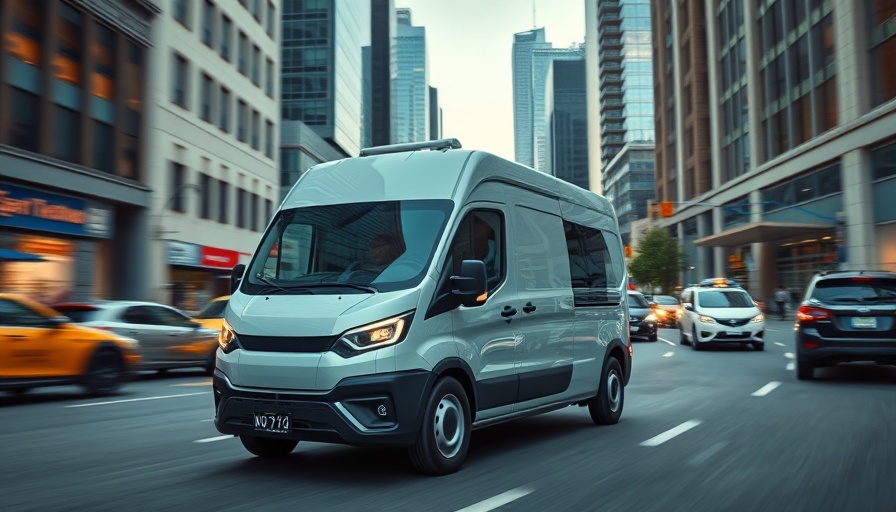
A New Era for Electric Commercial Vehicles
The automotive sector is poised for a transformation with Citroën's upcoming launch of the all-electric ë-C3 van. Scheduled to hit the market in mid-April 2025, this vehicle promises to make electric mobility accessible to even the smallest businesses. With competitive pricing—starting at an impressive £15,035 excluding VAT—the ë-C3 van positions itself as a compelling alternative for many commercial buyers.
Meeting Market Demand and Bridging the Gap
Citroën aims to fill a distinct void in the light commercial vehicle market. As traditional favorites like the Ford Fiesta van are discontinued, the ë-C3 van targets buyers who need an efficient, compact, and environmentally friendly option. Citroën's strategy reflects a growing recognition of the importance of transitioning smaller businesses to electric solutions.
Impressive Range and Practical Specifications: The Key Advantages of the ë-C3 Van
The ë-C3 van boasts a commendable 200-mile range—one of the best in its class—which can alleviate range anxiety for commercial operators. Its 44kWh battery, while slightly less powerful than some competitors, provides significant operational benefits for urban driving and last-mile deliveries. Additionally, the van’s maximum payload capability of 494kg and cargo volume of 1.2m² make it suitable for various delivery needs, further enhancing its practicality for businesses focused on efficiency.
Technology Meets Utility: Smart Features for the Modern Business
The van retains a host of features from its passenger counterpart, including a 10.25-inch touchscreen and comprehensive smartphone integration capabilities with Apple CarPlay and Android Auto. These technological advancements not only ensure a comfortable driving experience but also incorporate essential functionality for business operations, allowing for seamless connectivity and monitoring of vehicle performance.
Driving Down Costs: Operational Advantages of the ë-C3 Van
Beyond its purchase price, the ë-C3 van offers significant operational savings. Operational costs for electric vehicles tend to be lower compared to petrol or diesel counterparts, with energy costs per mile being substantially reduced and maintenance needs minimized due to fewer moving parts in electric drivetrains. This cost-efficiency can be a game-changer for businesses facing tight budgets.
Future Trends: How Electric Vans Impact Small Business
As more companies seek to transition to electric, understanding market trends and consumer preferences becomes paramount. Citroën’s ë-C3 van not only meets the immediate needs of cost-conscious businesses but also emerges as a symbol of the shift toward sustainable practices in commerce. This transition reflects broader societal values around environmental responsibility and the adoption of clean technologies.
Final Thoughts: The ë-C3 Van as a Game-Changer for Businesses
The Citroën ë-C3 van signifies a major advancement in the field of electric commercial vehicles. With its affordable entry point, ample range, and practical features, it represents a viable option for businesses looking to modernize their fleets. As the market for electric vehicles expands, innovations like the ë-C3 van pave the way for smaller enterprises to lead the charge toward sustainability.
As a final invitation, explore how Citroën’s innovative approach to electric commercial vehicles can empower your business to take the next step toward electric mobility. It may just be the decision that aligns economic benefits with environmental responsibility.
 Add Row
Add Row  Add
Add 



 Add Row
Add Row  Add
Add 
